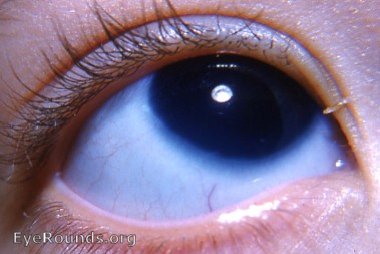
Children born with this condition suffer from aniridia, and also tend to suffer intellectual disability and behavioral problems, abnormal formation of the genitals, and an extremely high risk for an otherwise rare type of kidney cancer known as Wilms’ tumor. This is an acronym for Wilms’ tumor, Aniridia, Genitourinary anomalies, and Retardation. Gillespie syndrome, a rare congenital disorder characterized by partial aniridia, mental disability, and difficulty with motor control and coordination.Miller Syndrome, a disorder affecting the development of the face and limbs.

What Are Some of the Underlying Causes of Aniridia?Īniridia also presents itself as a feature of a number of unrelated genetic disorders, including: Children suffering from aniridia also may have a tendency to squint, and may develop strabismus (crossed eyes). The aggregate effect of these problems is to cause vision loss over time, sometimes leading to blindness. Glaucoma often appears at some point during the affected person’s adolescence, and more than half of aniridia sufferers-and perhaps as many as 80 percent-eventually develop cataracts. What Are the Complications Resulting from Aniridia?Īniridia tends to lead to other eye problems in the long run. In about two thirds of all cases, the affected person inherits the mutated gene from one of their parents in the remaining cases, the mutation is new, and there is no prior family history of aniridia. This means that only one parent needs to carry the gene for there to be a 50 percent chance that a child will be born with the resulting condition (this will be true for each pregnancy involving the same couple). When this happens, aniridia will begin to appear sometime between the 12 th and 14 th weeks of pregnancy.Īniridia is usually inherited in what is known as an autosomal dominant pattern.

In most cases, however, it is genetic, caused by a mutation in the PAX6 gene, which is responsible for instructing the developing body to manufacture a protein essential to the development of the eyes. This condition is usually congenital, although it can sometimes be caused by trauma-especially a penetrating eye injury. In general, however, visual acuity for people with this condition ranges from 20/80 to 20/200.Īffected individuals may also develop a clouding of the cornea known as aniridic keratopathy. While the name aniridia implies the complete absence of an iris, the truth is that there is always some rudimentary iritic tissue present, even in cases of so-called “total aniridia.” The degree to which this condition affects vision varies from one patient to another, but some children with aniridia have 20/30 vision or better (meaning that they can see as well at a distance of 20 feet as a normal person can see at 30). Many people who are born with this condition also experience involuntary eye shakiness, a condition known as nystagmus. Because we depend on the iris to regulate the amount of light that enters the eye, the absence of the iris causes extreme sensitivity to light, a condition known as photophobia.

The eyes will appear black, with no color separating the white from the pupil. With partial aniridia, part of the iris is missing, and the affected individual will have large, misshapen pupils surrounded by a thin ring of color these partial irides will not contract and expand in the way that a normal iris does.Īniridia presents a striking, distinctive appearance. In cases of total aniridia, there is no visible iris. This uncommon condition, also known as iris hypoplasia, occurs in one out of every 50,000 to 100,000 infants born worldwide (although incidence varies from one region to another).Īniridia is almost always bilateral (affecting both eyes), and is categorized as either partial or total. The term aniridia means, literally, “without iris.” Some unfortunate people are born missing part or all of the iris, the colored part of the eye.


 0 kommentar(er)
0 kommentar(er)
